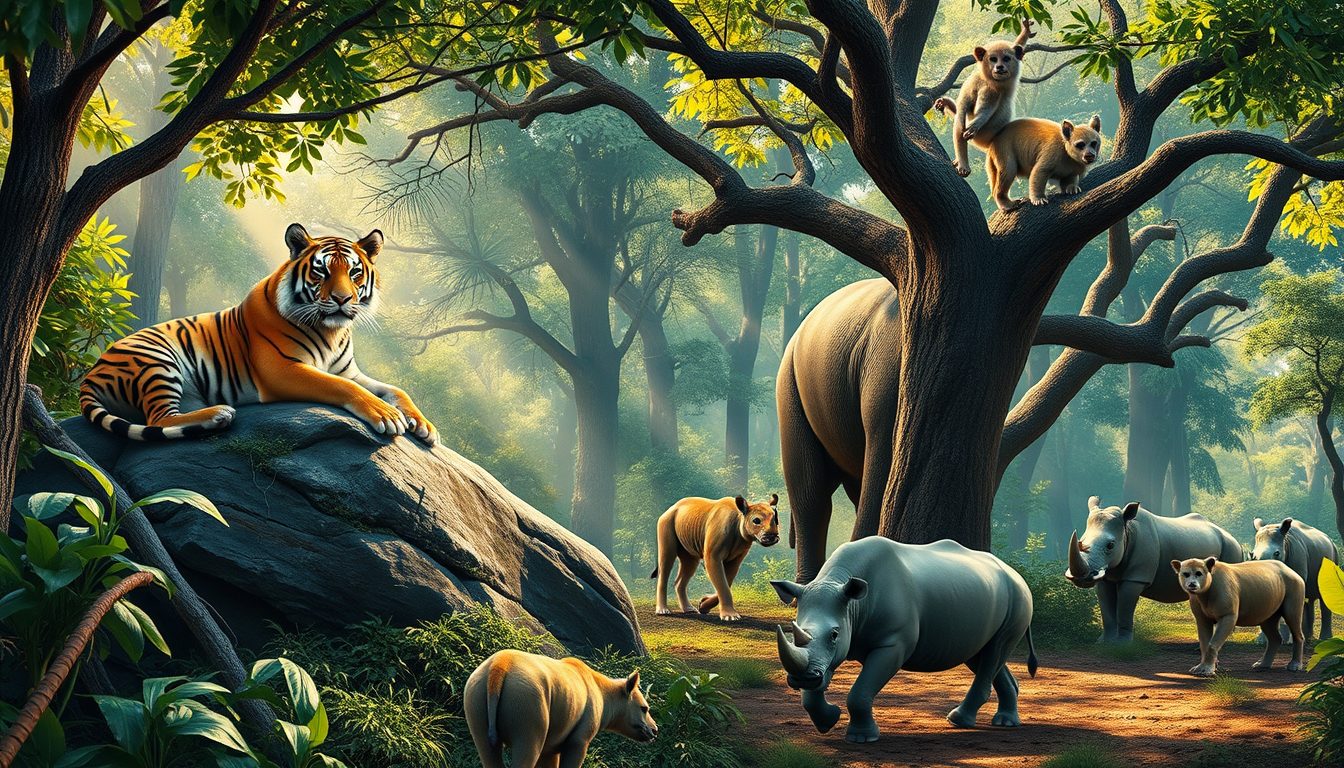Indian mammals are a diverse and fascinating group of animals that inhabit the subcontinent of India. From the majestic Bengal tiger to the tiny Indian hedgehog, these creatures play a crucial role in the ecosystem and cultural heritage of the country. In this comprehensive guide, we will explore the various species of Indian mammals, their habitats, behaviors, and conservation efforts.
Introduction to Indian Mammals
India is home to a rich variety of mammals, with over 400 species found across the country. These mammals range from large herbivores like the Asian elephant to small carnivores like the Indian mongoose. The diverse landscapes of India, including the Himalayas, the Indian Ocean coast, and the deserts of Rajasthan, provide habitats for a wide range of mammals.
Large Mammals in India
The Bengal Tiger
The Bengal tiger is one of the most iconic mammals in India and is the national animal of the country. These powerful predators are found in various habitats, including forests, grasslands, and mangroves. Bengal tigers are known for their distinctive orange and black stripes and are listed as Endangered on the IUCN Red List.
Conservation Efforts for Bengal Tigers
Conservation efforts for Bengal tigers have been successful in recent years, with the tiger population increasing from around 1,400 in 2006 to over 2,500 in 2018. This increase is due to various conservation initiatives, including habitat protection, anti-poaching measures, and community-based conservation programs.
The Asian Elephant
The Asian elephant is another large mammal found in India. These gentle giants are known for their intelligence and social behavior. They are found in various habitats, including forests, grasslands, and even in some urban areas.
Conservation Challenges for Asian Elephants
Asian elephants face several conservation challenges, including habitat loss, human-wildlife conflict, and poaching. Conservation efforts focus on protecting elephant habitats, promoting coexistence with local communities, and enforcing anti-poaching laws.
Small Mammals in India
The Indian Mongoose
The Indian mongoose is a small, agile mammal found throughout India. They are known for their ability to catch snakes and are often seen in agricultural fields and urban areas.
The Role of Indian Mongooses in Ecosystems
Indian mongooses play an important role in ecosystems by controlling populations of rodents and snakes. They are also a popular pet in some parts of India.
The Indian Hedgehog
The Indian hedgehog is a small, spiky mammal found in various habitats, including forests, grasslands, and urban areas. They are known for their ability to curl into a ball when threatened.
The Conservation Status of Indian Hedgehogs
The conservation status of Indian hedgehogs is not well-documented, but they are not considered endangered. However, habitat loss and human-wildlife conflict pose threats to their populations.
Marine Mammals in India
The Indian Ocean Humpback Dolphin
The Indian Ocean humpback dolphin is a marine mammal found along the coasts of India. They are known for their distinctive humpback and are often seen in shallow waters near the coast.
The Importance of Marine Mammals for Ecosystems
Marine mammals play a crucial role in ocean ecosystems by controlling populations of fish and other marine life. They are also important indicators of ocean health.
The Whale Shark
The whale shark is the largest fish in the world and is found in the waters off the coast of India. They are known for their distinctive spots and are often seen in shallow waters near the coast.
Conservation Efforts for Whale Sharks
Whale sharks are listed as Vulnerable on the IUCN Red List due to threats such as bycatch in fisheries and habitat loss. Conservation efforts focus on protecting whale shark habitats, promoting sustainable tourism, and enforcing fishing regulations.
Unique Mammals in India
The Sloth Bear
The sloth bear is a unique mammal found in the forests of India. They are known for their long, curved claws and their diet of termites and ants.
The Conservation Status of Sloth Bears
Sloth bears are listed as Vulnerable on the IUCN Red List due to habitat loss and human-wildlife conflict. Conservation efforts focus on protecting sloth bear habitats and promoting coexistence with local communities.
The Indian Rhinoceros
The Indian rhinoceros is a large, horned mammal found in the forests of India. They are known for their distinctive horn and their solitary nature.
Conservation Efforts for Indian Rhinoceroses
Indian rhinoceroses are listed as Vulnerable on the IUCN Red List due to habitat loss and poaching. Conservation efforts focus on protecting rhinoceros habitats, promoting anti-poaching measures, and promoting sustainable tourism.
Conclusion
Indian mammals are a diverse and fascinating group of animals that play a crucial role in the ecosystem and cultural heritage of the country. From the majestic Bengal tiger to the tiny Indian hedgehog, these creatures are an integral part of India’s natural heritage. Conservation efforts are essential to protect these species and their habitats, ensuring that future generations can continue to enjoy and appreciate the rich biodiversity of India.
References
– IUCN Red List of Threatened Species
– World Wildlife Fund (WWF)
– Indian Board of Wildlife
– National Geographic
– The Wildlife Trust of India
